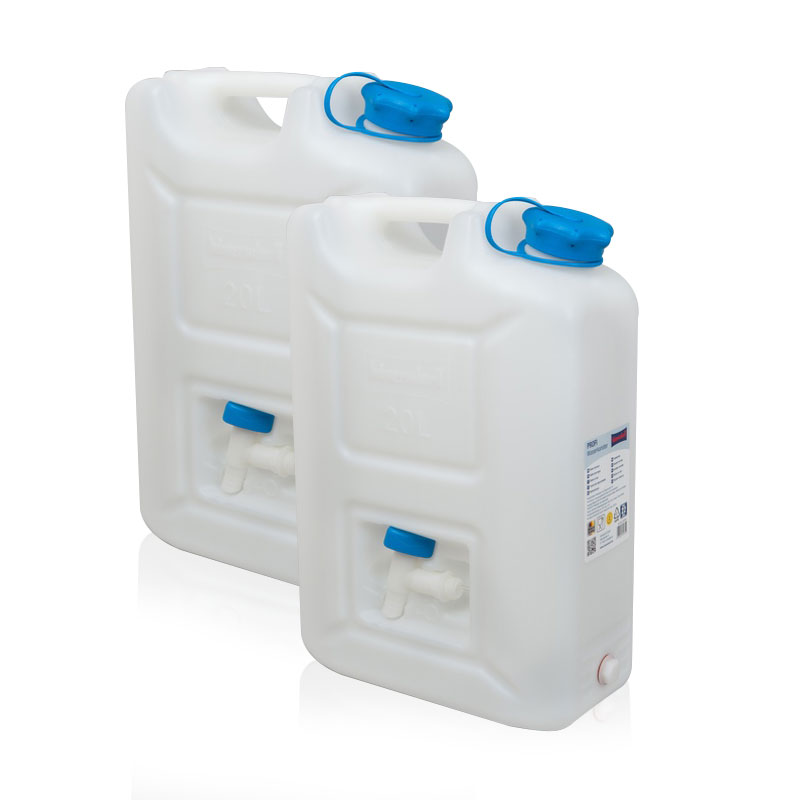Water Containers
How To Clean Water Storage Containers
Water storage containers play a crucial role in emergency preparedness, sustainable living, and ensuring access to clean water in various contexts. Whether for households, communities, or disaster relief efforts, having adequate water storage capacity is essential for mitigating the impact of water scarcity, natural disasters, or infrastructure failures. Properly stored water can serve as a lifeline during times of crisis, providing hydration, sanitation, and cooking needs when regular water sources are compromised. Additionally, water storage containers contribute to water conservation efforts by enabling individuals to collect and store rainwater or greywater for non-potable uses, reducing strain on municipal water supplies and promoting environmental sustainability. In essence, investing in reliable water storage containers is an indispensable aspect of resilience-building and ensuring water security for both current and future generations.
Your 7-Step Guide To Cleaning Your Water Containers
Certainly! Here’s a guide outlining the best steps to clean water containers effectively:
Step 1: Gather Supplies
- Gather the necessary supplies, including dish soap, a scrub brush or sponge, bleach or vinegar, and clean water.
Step 2: Empty the Container
- Empty the water container completely, pouring out any remaining water and ensuring there are no debris or particles inside.
Step 3: Wash with Soap and Water
- Fill the container with warm water and add a few drops of dish soap.
- Use a scrub brush or sponge to thoroughly clean the inside of the container, paying special attention to any corners or crevices where dirt or residue may accumulate.
- Rinse the container with clean water to remove any soap residue.
Step 4: Disinfect
- To disinfect the container, prepare a sanitising solution by mixing one teaspoon of bleach per gallon of water.
- Fill the container with the bleach solution, ensuring all surfaces are thoroughly coated.
- Let the solution sit for at least 5 minutes to effectively kill any bacteria or germs.
- Alternatively, you can use white vinegar as a natural disinfectant by filling the container with undiluted vinegar and letting it sit for 10-15 minutes before rinsing.
Step 5: Rinse
- After disinfecting, thoroughly rinse the container with clean water to remove any traces of bleach or vinegar.
Step 6: Air Dry
- Allow the container to air dry completely before refilling it with water. Ensure it is stored in a clean, dry environment to prevent contamination.
Step 7: Regular Maintenance
- Regularly inspect and clean water containers to prevent the buildup of algae, mold, or bacteria.
- If storing water for long periods, consider rotating the water every 6-12 months to maintain freshness.
By following these steps, you can ensure that your water containers remain clean, safe, and suitable for storing water for drinking, cooking, and other household needs.

What Are The Dangers Of Not Cleaning Water Storage Containers?
Failing to clean water storage containers can pose several dangers:
- Bacterial Contamination: Without proper cleaning, bacteria can multiply in stagnant water, leading to potential contamination. Consuming water contaminated with bacteria such as E. coli or salmonella can cause gastrointestinal illnesses, including diarrhoea, vomiting, and stomach cramps.
- Mould and Algae Growth: Moist environments inside water containers provide ideal conditions for mould and algae growth. Ingesting water contaminated with mould or algae can lead to respiratory issues, allergic reactions, or even toxic effects, particularly in individuals with compromised immune systems.
- Chemical Contamination: Residues from previous contents or cleaning products left behind in inadequately cleaned water containers can leach into stored water, leading to chemical contamination. This can result in adverse health effects upon ingestion, depending on the type and concentration of chemicals present.
- Foul Odors and Taste: Accumulated dirt, debris, and microbial growth can impart unpleasant odours and tastes to stored water, making it unpalatable and undesirable for consumption. This may discourage individuals from drinking an adequate amount of water, leading to dehydration and associated health issues.
- Reduced Effectiveness of Emergency Preparedness: In emergency situations where access to clean water may be compromised, improperly cleaned water storage containers can undermine preparedness efforts. Contaminated water may not be suitable for consumption or sanitation purposes, posing additional risks to health and well-being during crises.
Overall, neglecting to clean water storage containers can compromise water quality, jeopardize health, and undermine the effectiveness of emergency preparedness measures. Regular cleaning and maintenance are essential to ensure that stored water remains safe, clean, and suitable for consumption.

